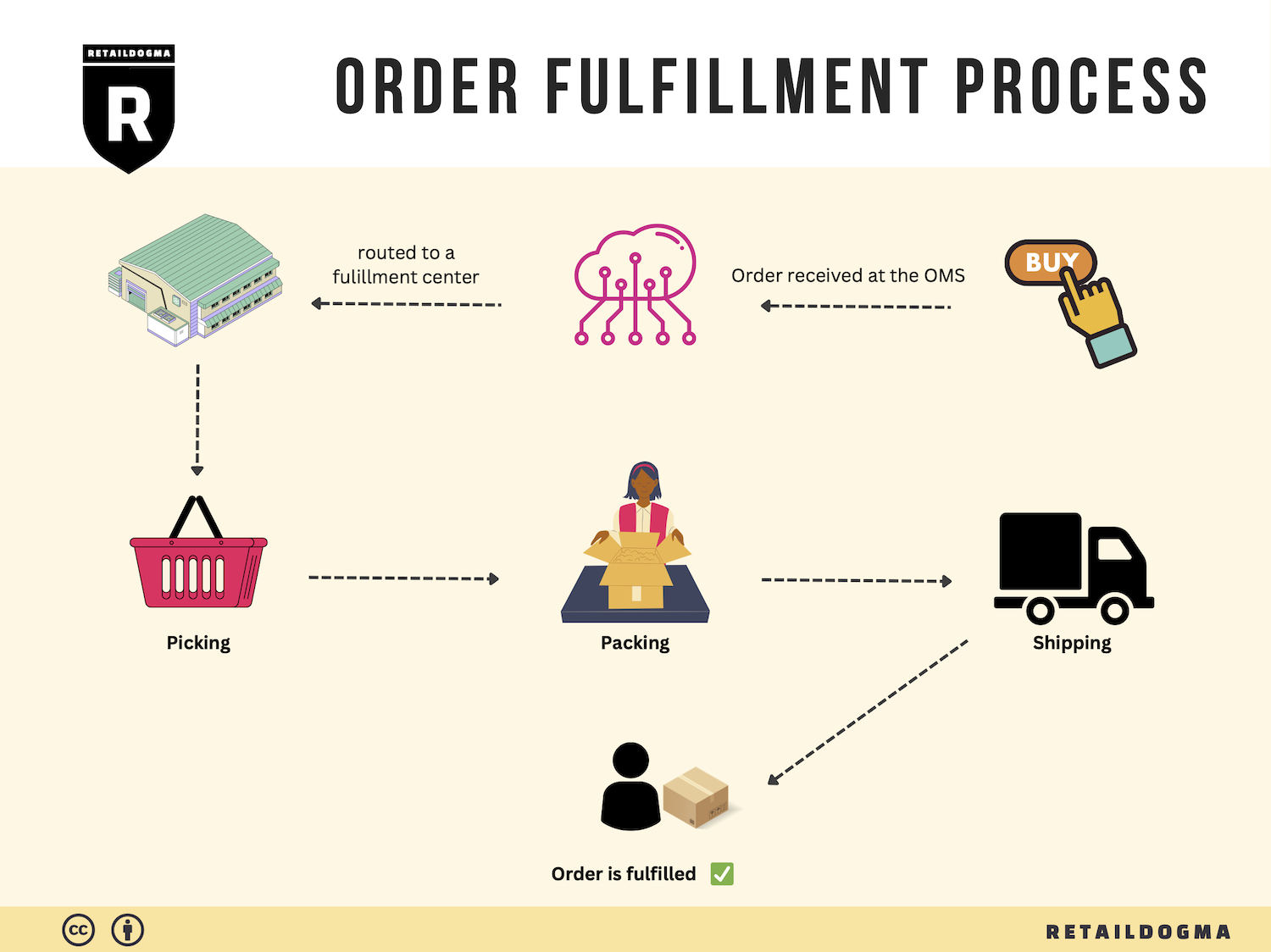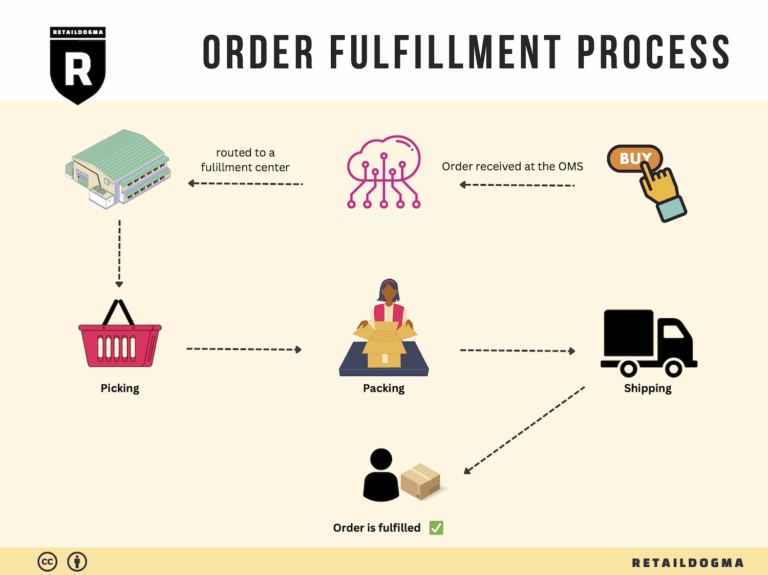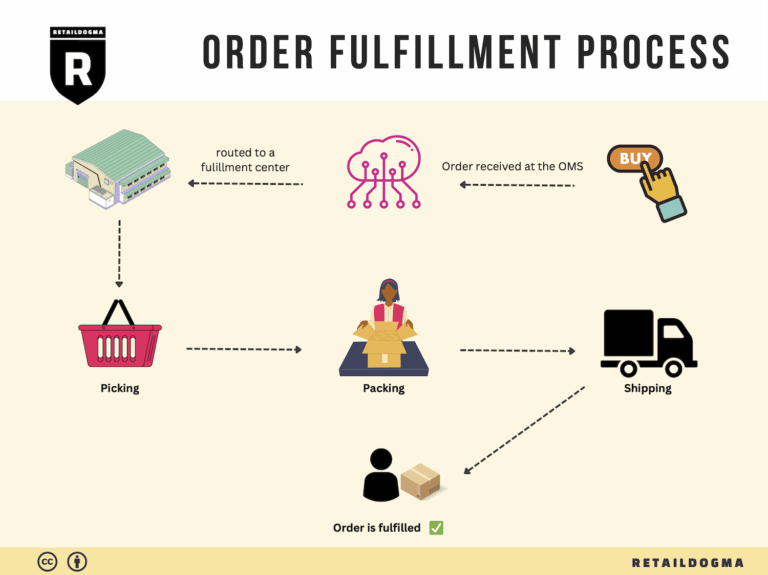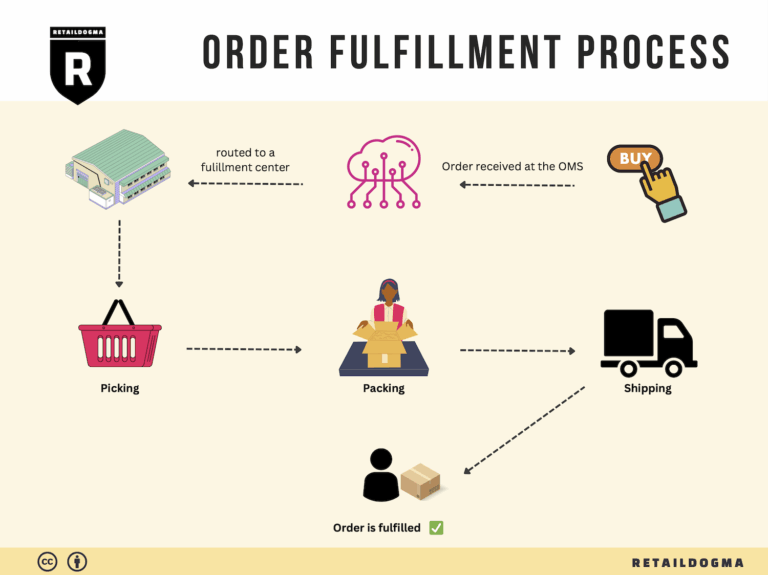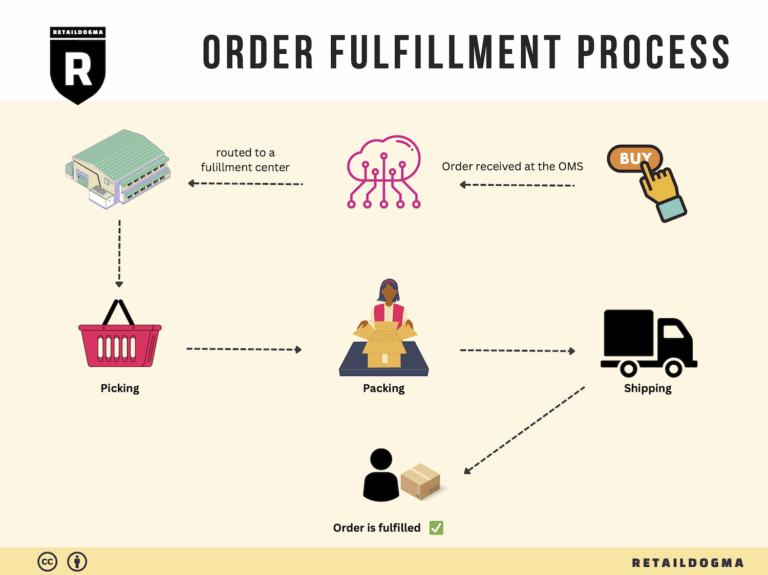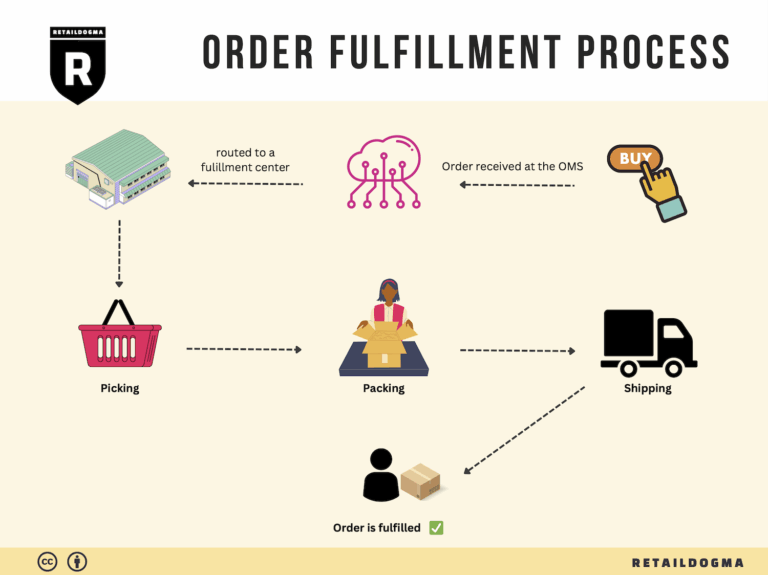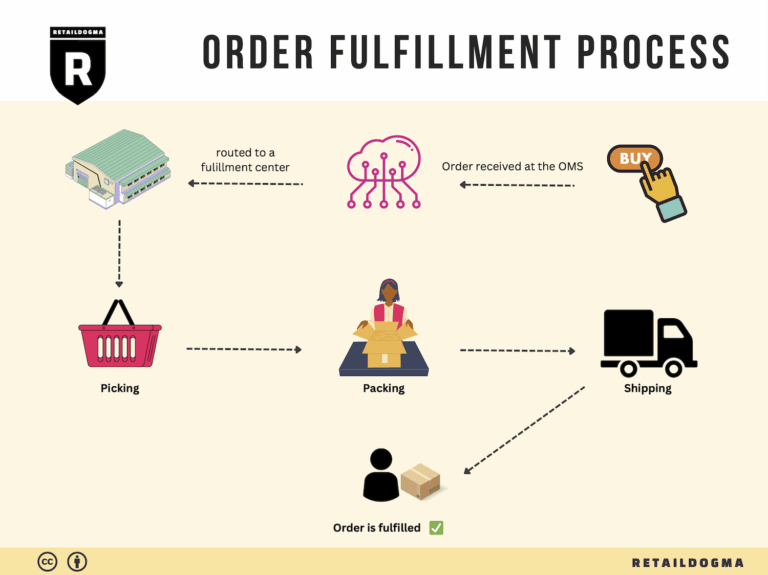Ecommerce Fulfillment Services: The Ultimate Guide (2025)
What is E-commerce Fulfillment? An Introduction for Growing Businesses
Understanding the Challenges of E-commerce Fulfillment
As an e-commerce business owner, you may find yourself overwhelmed by the demands of packing and shipping orders. While the excitement of acquiring new customers and driving sales is exhilarating, the logistical challenges that accompany growth can be daunting. As orders increase, so does the complexity of getting products into the hands of your customers efficiently and reliably. This is where understanding fulfillment becomes crucial.
At its core, e-commerce fulfillment is the process of getting a product from your warehouse or storage facility to the customer’s doorstep. It encompasses everything from inventory management to order processing, packing, shipping, and handling returns. For growing businesses, mastering this process is vital to maintaining customer satisfaction and scaling operations effectively.
What This Guide Will Cover
In this comprehensive guide, we will explore various fulfillment models available to e-commerce businesses, including Third-Party Logistics (3PL) and Fulfillment by Amazon (FBA). Each model has its unique advantages and challenges, and understanding these can help you determine the best fit for your business.
We will delve into the core services that fulfillment partners offer, such as inventory storage, order processing, packaging, and shipping. These services are not only essential for operational efficiency but also play a significant role in enhancing the customer experience.
Choosing the right fulfillment partner is a pivotal decision for any growing business. We will discuss key factors to consider, including service reliability, technology integration, scalability, and cost-effectiveness. Making an informed choice can significantly impact your operational success and customer satisfaction.
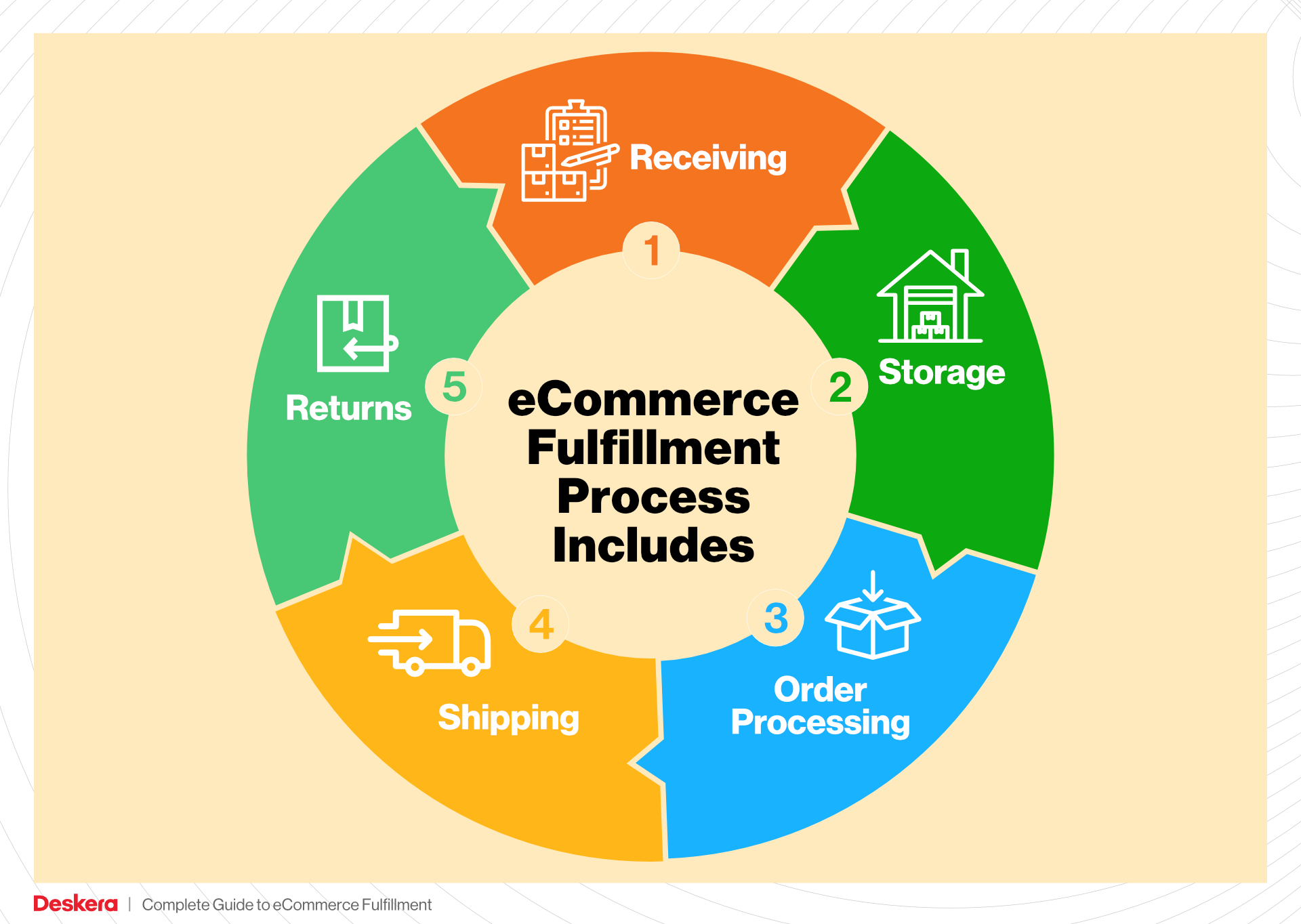
Additionally, we will provide insights into pricing structures associated with different fulfillment models, including fees related to storage, shipping, and handling. Understanding these costs will empower you to make more strategic financial decisions as you scale your business.
Empowering Your Logistics Decisions
The ultimate goal of this guide is to empower you with the knowledge and tools necessary to make informed decisions about your logistics. By demystifying the fulfillment process and providing actionable insights, we aim to help you navigate the complexities of e-commerce fulfillment confidently. Whether you are a startup looking to establish a strong foundation or an established business seeking to optimize your operations, this guide will serve as your roadmap to successful fulfillment strategies.
What You’ll Learn In This Guide
- What is E-commerce Fulfillment? An Introduction for Growing Businesses
- The Order Fulfillment Process: From ‘Buy’ Button to Customer’s Door
- Comparing Fulfillment Models: In-House vs. 3PL vs. Dropshipping
- A Deep Dive into Amazon FBA: Pros, Cons, and Who It’s For
- Core Services Offered by Fulfillment Centers
- How to Choose a Fulfillment Partner: A 6-Point Checklist
- Understanding Fulfillment Pricing: A Breakdown of Common Fees
- Frequently Asked Questions (FAQs) about Fulfillment
- Conclusion: Is Outsourcing Fulfillment the Right Move for Your Business?
- Important Disclaimer
The Order Fulfillment Process: From ‘Buy’ Button to Customer’s Door
1. Receiving Inventory
The order fulfillment process begins with receiving inventory into your warehouse or fulfillment center. When products arrive, they are checked against purchase orders to ensure the correct quantities and items have been received. This stage is crucial for maintaining inventory accuracy and avoiding stock discrepancies.
Importance: Properly receiving inventory helps prevent stockouts and overstock situations, which can lead to lost sales or increased holding costs. This process also establishes an accurate baseline for inventory management.
Key Term: SKU (Stock Keeping Unit) – A unique identifier assigned to each product, allowing for efficient tracking and management of inventory levels.
2. Warehouse Storage
Once the inventory is received and verified, it is stored in the warehouse. Efficient storage practices are vital, as they influence the speed of subsequent fulfillment steps. Products are often organized based on various factors, such as size, demand, or type, to facilitate quick access.
Importance: Effective warehouse storage not only maximizes space utilization but also enhances order picking speed and accuracy. A well-organized warehouse can significantly reduce the time it takes to locate and retrieve items when orders are placed.
Key Term: ABC Analysis – A method for categorizing inventory based on its importance and turnover rate, which helps in optimizing storage strategies.
3. Order Picking
When a customer places an order, the next step is order picking, where items are selected from their storage locations. This can involve various picking methods, such as batch picking, where multiple orders are picked simultaneously, or single order picking for individual shipments.
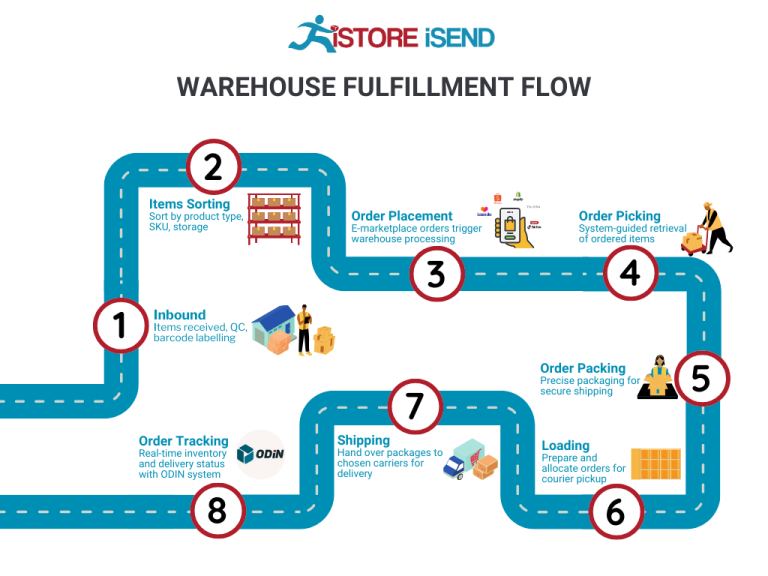
Importance: Efficient order picking is essential for minimizing order lead times and ensuring customer satisfaction. The faster and more accurately you can pick items, the quicker you can fulfill customer orders, which is vital for maintaining a competitive edge.
Key Term: Pick List – A document or digital display that outlines the items and quantities to be picked for a specific order, guiding warehouse staff through the picking process.
4. Order Packing
After the items have been picked, they move to the packing station. Here, products are carefully packaged to ensure they arrive safely at the customer’s door. Packaging materials should be chosen based on the nature of the products, with considerations for cost-effectiveness and environmental impact.
Importance: Proper packing protects items during transit and can also enhance the unboxing experience for customers. Additionally, efficient packing can help control shipping costs by optimizing package size and weight.
Key Term: Dimensional Weight Pricing – A pricing method used by shipping carriers that takes into account the volume of the package in addition to its actual weight, influencing packing decisions.
5. Shipping & Delivery
The final step in the order fulfillment process is shipping the packaged order to the customer. This involves selecting a carrier, generating shipping labels, and tracking the shipment until it reaches the customer. Timely delivery is a key factor in customer satisfaction and loyalty.
Importance: Efficient shipping and delivery processes can significantly enhance customer experience and reduce cart abandonment rates. Additionally, offering various shipping options can cater to different customer preferences and budgets.
Key Term: Last Mile Delivery – The final step of the delivery process, where the package is transported from a transportation hub to the final delivery destination, often considered the most critical and costly part of the shipping process.
By understanding and optimizing each step of the order fulfillment process, e-commerce businesses can enhance operational efficiency, reduce costs, and ultimately improve customer satisfaction.
Comparing Fulfillment Models: In-House vs. 3PL vs. Dropshipping
Fulfillment Models Comparison
| Model | Who Handles Inventory | Best For (Business Stage) | Key Advantage | Key Disadvantage |
|---|---|---|---|---|
| In-House Fulfillment | Business (owner/employee) | Established businesses | Full control over inventory and operations | Higher overhead costs and complexity |
| Third-Party Logistics (3PL) | Third-party logistics provider | Scaling businesses | Scalable, cost-effective, and expertise in logistics | Less control over fulfillment and potential delays |
| Dropshipping | Supplier or manufacturer | Startups and small businesses | Low overhead and no inventory investment | Lower profit margins and reliance on suppliers |
In-House Fulfillment
In-house fulfillment is a model where a business manages its own inventory and order processing. This typically involves the business owning and operating a warehouse or storage facility, where products are stored, picked, packed, and shipped by the company’s employees. This model is particularly advantageous for established businesses that have the resources to maintain their own logistics operations. The key advantage of in-house fulfillment is the level of control it affords: businesses can manage inventory levels, shipping times, and quality assurance directly, ensuring a tailored customer experience. However, this model also comes with significant disadvantages, such as higher overhead costs related to warehousing, staffing, and technology. Additionally, the complexity of managing fulfillment operations can divert focus from core business activities, making it a less attractive option for smaller businesses or those just starting out.
Third-Party Logistics (3PL)
Third-party logistics, or 3PL, involves outsourcing the logistics and fulfillment processes to a specialized provider. This model is ideal for businesses that are looking to scale without the burden of investing in their own logistics infrastructure. A 3PL provider handles warehousing, inventory management, order processing, and shipping, allowing businesses to focus on growth and customer engagement. The key advantage of using a 3PL is the scalability it offers; businesses can easily adjust their logistics needs based on sales volume without significant capital investment. Additionally, 3PLs often have established relationships with carriers, which can lead to better shipping rates and faster delivery times. However, a key disadvantage is the loss of control over the fulfillment process. Businesses may face challenges with communication and coordination, which can lead to delays and customer dissatisfaction if not managed effectively.
Dropshipping
Dropshipping is a fulfillment model where the retailer does not hold inventory but instead transfers customer orders directly to a supplier, who then ships the products directly to the customer. This model is particularly appealing for startups and small businesses due to its low overhead and minimal financial risk. Since businesses do not need to invest in inventory upfront, they can offer a wide range of products without significant capital expenditure. This flexibility allows entrepreneurs to test new products and markets with reduced risk. However, dropshipping comes with its own set of challenges. The key disadvantage is the lower profit margins compared to traditional retail models, as suppliers typically charge a premium for their services. Additionally, businesses relying on dropshipping are at the mercy of their suppliers for inventory levels, shipping times, and product quality, which can lead to inconsistencies in customer experience and potential reputational damage.
Conclusion
When choosing a fulfillment model, e-commerce businesses must carefully consider their current stage, resources, and long-term goals. In-house fulfillment offers control but at a higher cost and complexity, while 3PL provides a balanced approach to scalability and efficiency. Dropshipping presents an attractive low-risk option for new businesses but can compromise profitability and customer satisfaction if not managed properly. By understanding the strengths and weaknesses of each model, business owners can make informed decisions that align with their operational needs and growth ambitions.
A Deep Dive into Amazon FBA: Pros, Cons, and Who It’s For
Understanding Fulfillment by Amazon (FBA)
Fulfillment by Amazon (FBA) is a service provided by Amazon that allows sellers to store their products in Amazon’s fulfillment centers. Amazon then takes care of storage, packaging, and shipping, providing a seamless shopping experience for customers. When a customer orders a product, Amazon handles the entire process, from picking the item off the shelf to delivering it to the customer’s doorstep. This service also includes customer service and returns management, making it an attractive option for e-commerce businesses looking to streamline their logistics.
How FBA Works
-
Registration and Setup: Sellers need to create an Amazon Seller account and choose the FBA option. They can list their products on Amazon and designate them for FBA.
-
Shipping Inventory: Sellers prepare their products according to Amazon’s guidelines and ship them to designated Amazon fulfillment centers. Amazon provides specific packing and labeling requirements to ensure smooth processing.
-
Storage: Once the inventory arrives at Amazon’s warehouses, it is stored until sold. Amazon uses sophisticated inventory management systems to track stock levels.
-
Order Fulfillment: When a customer places an order, Amazon’s fulfillment team picks, packs, and ships the product. This efficiency often leads to faster delivery times, including eligibility for Amazon Prime.
-
Customer Service: Amazon manages all customer inquiries, returns, and refunds related to FBA products, allowing sellers to focus on other aspects of their business.
-
Fees: Sellers are charged various fees for using FBA, including storage fees for keeping inventory in Amazon’s warehouses and fulfillment fees for each order processed. Understanding these costs is crucial for maintaining profitability.
Pros of Amazon FBA
Prime Eligibility
One of the major advantages of using FBA is that products become eligible for Amazon Prime. This can significantly boost sales, as Prime members are more likely to purchase items that offer fast, free shipping. The Prime badge enhances product visibility and can lead to higher conversion rates.
Customer Trust
Amazon is a well-established brand known for its customer service and reliability. When sellers use FBA, they benefit from Amazon’s reputation, which can increase customer trust in their products. Buyers often feel more secure purchasing items that are fulfilled by Amazon due to the guarantee of quality service.
Multi-Channel Fulfillment
FBA is not limited to Amazon’s marketplace. Sellers can use FBA for multi-channel fulfillment, meaning they can sell their products on other platforms (like eBay or their own websites) while still utilizing Amazon’s logistics network. This flexibility allows sellers to reach a broader audience without managing separate fulfillment processes.
Cons of Amazon FBA
High Fees
One of the most significant drawbacks of FBA is the cost. Sellers incur various fees, including fulfillment fees based on size and weight, monthly storage fees, and long-term storage fees for items held in inventory for extended periods. For some businesses, these fees can eat into profit margins, making it essential to calculate costs carefully.
Strict Inventory Rules
Amazon has stringent inventory management policies. Sellers must comply with specific guidelines regarding product preparation, labeling, and shipping. Failure to adhere to these rules can result in additional fees or even inventory being returned to the seller. This can create challenges for businesses that do not have robust inventory management practices in place.
Commingling Risks
FBA products are often commingled, meaning that sellers’ inventory is stored alongside that of other sellers. While this can enhance efficiency, it also poses risks. If a customer receives a damaged or defective product, it can lead to negative feedback for the seller, even if the issue was not directly related to their inventory. This risk can be particularly concerning for brands that prioritize quality control.
Who is FBA Best For?
FBA can be an excellent option for various types of sellers, but it is particularly beneficial for:
-
Small to Medium-Sized Businesses: For businesses that lack the resources to manage their own logistics, FBA provides a scalable solution that allows them to focus on product development and marketing.
-
Retail Arbitrage Sellers: Those who buy products from retail stores to resell on Amazon can benefit from FBA, as it simplifies the shipping and handling process.
-
Brands Looking to Scale: Established brands that want to expand their reach and take advantage of Amazon’s vast customer base will find FBA advantageous, especially if they are already selling on other platforms.
-
Seasonal Sellers: Businesses that experience fluctuations in demand can use FBA to manage inventory during peak seasons without needing to invest in their own warehousing.
In conclusion, Fulfillment by Amazon offers significant advantages for e-commerce businesses, particularly in terms of scalability and customer reach. However, sellers must carefully consider the associated costs and operational challenges. By weighing the pros and cons and understanding their unique business needs, sellers can determine whether FBA is the right fulfillment solution for their growth strategy.
Core Services Offered by Fulfillment Centers
Inventory Management & Warehousing
Inventory management and warehousing are foundational services offered by fulfillment centers. This involves the systematic tracking and storage of products in a way that maximizes efficiency and minimizes costs. Fulfillment centers utilize sophisticated software systems to monitor stock levels, forecast demand, and manage reordering processes.
Benefits to E-commerce Businesses:
-
Real-Time Visibility: Businesses gain access to real-time inventory data, enabling them to make informed decisions about stock levels and avoid overstocking or stockouts.
-
Optimized Storage Solutions: Fulfillment centers utilize space efficiently, often employing advanced storage techniques like pallet racking or bin shelving. This can lead to reduced warehousing costs compared to managing inventory in-house.
-
Scalability: As a business grows, fulfillment centers can easily adjust to increased inventory demands without the need for businesses to invest in additional physical space or resources.
-
Cost Efficiency: By leveraging the economies of scale that fulfillment centers provide, e-commerce businesses can reduce their overall warehousing costs and focus financial resources on other growth areas.
Pick and Pack Services
Pick and pack services are critical components of the fulfillment process. This service involves selecting the ordered items from the warehouse (picking) and preparing them for shipment (packing). Fulfillment centers use automation and skilled labor to ensure that this process is efficient and accurate.
Benefits to E-commerce Businesses:
-
Speed and Accuracy: Fulfillment centers typically employ advanced technology and trained staff to ensure that orders are picked and packed quickly and accurately, reducing the likelihood of errors that can lead to returns and dissatisfied customers.
-
Streamlined Operations: By outsourcing the pick and pack process, e-commerce businesses can focus on their core competencies, such as marketing and customer service, rather than getting bogged down in logistics.
-
Flexible Order Fulfillment: Fulfillment centers can accommodate various order sizes and complexities, from single-item purchases to bulk orders, allowing businesses to cater to a broader range of customer needs.
-
Cost Savings: Utilizing a fulfillment center can lower labor costs associated with hiring and training in-house staff for picking and packing, allowing businesses to allocate resources more effectively.
Kitting and Assembly
Kitting and assembly services involve the process of combining multiple products into a single package or kit, often in preparation for a specific promotion or bundled sale. Fulfillment centers can efficiently handle this process, ensuring that products are assembled correctly and shipped as a cohesive unit.
Benefits to E-commerce Businesses:
-
Enhanced Product Offerings: Kitting allows businesses to create bundled products that can increase perceived value and encourage higher sales. For example, a beauty brand might bundle skincare products into a gift set, enhancing the customer experience.
-
Reduced Labor and Time: Outsourcing kitting and assembly to fulfillment centers saves businesses time and labor costs, as these facilities have the expertise and resources to complete the task efficiently.
-
Improved Inventory Management: By utilizing kitting services, businesses can manage their inventory more effectively, reducing the risk of overproduction or stockouts of individual components.
-
Customization Opportunities: Fulfillment centers can accommodate custom kitting requests, allowing businesses to offer personalized product bundles that cater to specific customer preferences or seasonal promotions.
Returns Management (Reverse Logistics)
Returns management, or reverse logistics, is an essential service that addresses the process of handling returned goods. Fulfillment centers can streamline the returns process, making it easier for customers to return products while also managing the logistics of restocking or disposing of returned items.
Benefits to E-commerce Businesses:
-
Customer Satisfaction: A well-managed returns process enhances customer satisfaction and loyalty. Fulfillment centers often provide easy return label generation and efficient processing, making it hassle-free for customers.
-
Efficient Processing: Fulfillment centers can quickly assess returned items, determining whether they can be restocked, refurbished, or need to be discarded. This helps businesses minimize losses from returns.
-
Data Insights: Fulfillment centers can provide valuable data on return reasons and trends, enabling businesses to identify product issues or areas for improvement in their offerings.
-
Cost Reduction: By outsourcing returns management, e-commerce businesses can reduce operational costs associated with handling returns, freeing up resources to focus on growth strategies and customer engagement.
In conclusion, leveraging the core services offered by fulfillment centers can significantly enhance the operational efficiency and scalability of e-commerce businesses. By outsourcing inventory management, pick and pack services, kitting and assembly, and returns management, businesses can focus on their core competencies while benefiting from the expertise and resources of fulfillment centers. This strategic partnership is crucial for businesses looking to thrive in the competitive e-commerce landscape.
How to Choose a Fulfillment Partner: A 6-Point Checklist
Location & Warehouse Network
Importance: The geographical location of your fulfillment partner’s warehouses can significantly impact shipping times and costs. A partner with strategically located warehouses can ensure faster delivery to your customers, enhancing their experience and improving your service levels.
Questions to Ask:
– What is the location of your warehouses, and how do they align with my target market?
– Do you have a network of warehouses that can cover multiple regions or countries?
– How do you handle shipping to remote areas or international destinations?
Technology & Integrations
Importance: In today’s digital-first environment, having the right technology is crucial for efficient operations. A fulfillment partner should offer robust systems that integrate seamlessly with your e-commerce platform, inventory management systems, and order processing tools.
Questions to Ask:
– What software do you use for order management, and can it integrate with my current e-commerce platform?
– Do you provide real-time tracking and inventory management tools?
– How do you handle updates and system maintenance? Is there a dedicated tech support team available?
Specializations (e.g., cold storage, oversized items)
Importance: Depending on your product offerings, you may need a fulfillment partner that specializes in certain types of storage and handling. This is especially true for businesses selling perishable goods, hazardous materials, or oversized items.
Questions to Ask:
– Do you have specialized facilities for handling my type of products (e.g., cold storage, fragile items)?
– What certifications or compliance measures do you have in place for specialized storage?
– How do you manage inventory that requires specific handling procedures?
Scalability & Capacity
Importance: As your business grows, your fulfillment needs will change. A good partner should be able to scale with you, whether that means accommodating seasonal spikes or long-term growth. Understanding their capacity will help you avoid bottlenecks in your supply chain.
Questions to Ask:
– What is your current capacity for handling my order volume?
– How quickly can you scale operations if my business experiences sudden growth?
– Do you have the flexibility to manage peak seasons without compromising service levels?
Pricing and Contracts
Importance: Understanding the pricing structure and contract terms is essential for managing your costs and ensuring that you’re getting value for your investment. Hidden fees can quickly erode your profits, so clarity upfront is key.
Questions to Ask:
– What is your pricing model? Are there any hidden fees I should be aware of?
– Can you provide a detailed breakdown of all potential charges (e.g., storage, handling, shipping)?
– What are the terms of the contract? Is there flexibility for renegotiation as my needs change?
Customer Support & Reviews
Importance: Exceptional customer support can make a significant difference in your fulfillment operations. A responsive partner can quickly resolve issues that arise, minimizing disruptions to your business. Additionally, researching reviews from other clients can provide insight into their reliability and service quality.
Questions to Ask:
– What kind of customer support do you offer (e.g., dedicated account manager, 24/7 support)?
– How do you handle disputes or issues that arise during the fulfillment process?
– Can you provide references or reviews from other clients in my industry?
Conclusion
Choosing the right fulfillment partner is a crucial decision for any e-commerce business. By carefully evaluating these six critical areas, you can ensure that you partner with a provider that not only meets your current needs but can also support your growth in the future. The right partner will help streamline your operations, improve customer satisfaction, and ultimately drive your business success.
Understanding Fulfillment Pricing: A Breakdown of Common Fees
Initial Setup Fees
When you start using a fulfillment service, there may be initial setup fees involved. These fees are typically charged to cover the costs of onboarding your products into the system. The exact amount can vary based on the provider, but it often includes:
- Account Setup: Creating and configuring your account on the fulfillment platform.
- Product Listing: Uploading product information, including descriptions, images, and pricing.
- Inventory Initialization: Storing and organizing your inventory in the fulfillment center.
These fees are usually a one-time cost and can range from a few hundred to several thousand dollars, depending on the complexity and size of your inventory. It’s important to clarify these costs upfront to avoid surprises.
Receiving Fees
Receiving fees are incurred when your inventory arrives at the fulfillment center. This fee covers the labor and resources needed to check in your products, inspect them for damages, and stock them in the warehouse. The calculation of receiving fees typically depends on:
- Volume of Inventory: Charged per pallet, bin, or item received. The more items you send, the higher the fee.
- Complexity of Products: Some fulfillment centers may charge additional fees for items that require special handling, such as fragile or hazardous materials.
Understanding these fees is crucial for budgeting your initial inventory shipments and ensuring you are not overcharged for basic receiving services.
Storage Fees (per pallet/bin)
Storage fees are charged for keeping your inventory in the fulfillment center. This fee can vary significantly based on the size and type of your products. Typically, storage fees are calculated as follows:
- Monthly Storage Fees: Charged based on the amount of space your products occupy in the warehouse, often calculated per cubic foot or pallet.
- Long-Term Storage Fees: If your products remain in storage for an extended period (usually over six months), additional long-term storage fees may apply to encourage faster inventory turnover.
It’s essential to monitor your inventory levels to avoid accumulating unnecessary storage fees, which can eat into your profit margins.
Pick & Pack Fees (per item/order)
Pick and pack fees are incurred each time an order is processed. This fee covers the labor involved in picking the items from the shelves, packing them for shipment, and preparing them for delivery. The calculation of pick and pack fees generally involves:
- Number of Items per Order: Most fulfillment centers charge a base fee for the first item and an additional fee for each item after that. For example, the first item might be $2.00, and each additional item could be $0.50.
- Packaging Costs: Some services may include packaging materials in their pick and pack fees, while others might charge separately for boxes, tape, and other supplies.
Understanding this fee structure helps you estimate your shipping costs more accurately and adjust your pricing strategy accordingly.
Shipping Fees
Shipping fees are one of the most significant costs associated with fulfillment services. They cover the transportation of your products from the fulfillment center to your customers. The calculation of shipping fees can depend on several factors:
- Shipping Method: Costs vary based on whether you choose standard, expedited, or overnight shipping options.
- Destination: Shipping fees can fluctuate based on the distance from the fulfillment center to the customer’s address, as well as any international shipping considerations.
- Weight and Dimensions: Heavier and larger packages typically incur higher shipping fees, so it’s vital to optimize your packaging to minimize costs.
To manage shipping fees effectively, consider using rate shopping tools that allow you to compare prices from different carriers.
Tips for Getting an Accurate Quote
To ensure you receive an accurate quote from your fulfillment partner, consider these practical tips:
- Provide Detailed Information: When requesting a quote, include specifics about your products, including size, weight, and any special handling requirements.
- Ask for a Breakdown: Request a detailed breakdown of all fees associated with your service. This transparency helps you understand the pricing model and avoid hidden costs.
- Discuss Volume Discounts: If you anticipate high order volumes, inquire about bulk discounts or tiered pricing to optimize your costs.
- Review Terms and Conditions: Carefully read through the terms of service to understand any potential fees that may apply after the initial setup.
- Seek Multiple Quotes: Don’t hesitate to compare quotes from different fulfillment centers to find the best value for your specific needs.
By being thorough and proactive in your discussions, you can ensure that the fulfillment pricing aligns with your business goals and budget.
Frequently Asked Questions (FAQs) about Fulfillment
1. What are the main fees associated with Fulfillment by Amazon (FBA)?
FBA sellers typically incur several fees, including:
– Fulfillment Fees: Charged per unit based on size and weight.
– Referral Fees: A percentage of the sale price, varying by category (commonly around 15%).
– Monthly Storage Fees: Based on the amount of space your inventory occupies in Amazon’s warehouses.
– Long-term Storage Fees: Applied to inventory stored for more than 365 days.
2. How are FBA fulfillment fees calculated?
FBA fulfillment fees are determined by the size and weight of your products. As of 2024, Amazon is introducing more granular rate cards that categorize products into standard, large bulky, and extra-large tiers. The fees vary depending on these categories, and you can find specific rates in Amazon’s seller central or through third-party calculators.
3. What are referral fees, and how do they work?
Referral fees are a commission paid to Amazon for each sale made through their platform. This fee is typically a percentage of the sale price and is deducted from your account balance after the sale is completed. The exact percentage varies by category, with most items falling around 15%.
4. What is the difference between a warehouse and a fulfillment center?
A warehouse is primarily used for storage, where goods are kept until they are needed. In contrast, a fulfillment center is designed to store, pick, pack, and ship products directly to customers. Fulfillment centers streamline the order processing and shipping process, often including additional services like returns management and inventory tracking.
5. What is a 3PL, and how does it relate to FBA?
A Third-Party Logistics (3PL) provider offers outsourced logistics services, including storage, shipping, and inventory management. While FBA is a specific service provided by Amazon, a 3PL can offer similar services across multiple platforms and may provide more flexibility or specialized services tailored to your business needs.
6. How much do fulfillment services cost beyond FBA?
Costs for fulfillment services can vary widely based on the provider and the services offered. Generally, you can expect to pay for:
– Storage Fees: Charged based on cubic footage.
– Picking and Packing Fees: Per order or per item.
– Shipping Costs: Depending on destination and carrier.
– Additional Services: Such as returns processing or kitting.
7. Are there any additional fees for returns or damaged inventory?
Yes, Amazon charges a refund administration fee for processing returns, which is either $5.00 or 20% of the refunded charge, whichever is less. Additionally, if products are damaged or unsellable, you may incur long-term storage fees or disposal fees if you choose to remove them from Amazon’s warehouses.
8. How can I estimate my FBA fees accurately?
To estimate your FBA fees accurately, you can use Amazon’s Fee Preview Report available in Seller Central or utilize third-party tools like Jungle Scout’s FBA fee calculator. These tools allow you to input product dimensions, weight, and category to get a detailed breakdown of your expected costs.
9. What are the benefits of using FBA despite the fees?
Using FBA provides significant advantages, including:
– Prime Eligibility: Access to millions of Amazon Prime customers.
– Customer Service: Amazon handles all customer inquiries and returns.
– Fast Shipping: Leveraging Amazon’s logistics network for quick delivery.
– Scalability: Ability to scale your business without the need for your own warehousing or logistics.
10. How can I minimize my FBA fees?
To minimize FBA fees, consider the following strategies:
– Optimize Inventory Levels: Avoid long-term storage fees by managing inventory turnover.
– Choose the Right Products: Focus on items with lower referral and fulfillment fees.
– Use Amazon’s Tools: Leverage tools like the FBA calculator to assess profitability.
– Monitor Fee Changes: Stay updated on Amazon’s fee structure changes to adjust your pricing and inventory strategy accordingly.
Conclusion: Is Outsourcing Fulfillment the Right Move for Your Business?
Key Benefits of Outsourcing Fulfillment
Outsourcing fulfillment can be a game-changer for e-commerce businesses seeking to scale efficiently. One of the most significant benefits is time savings. By leveraging a fulfillment partner, you can free up valuable hours spent on packing, shipping, and managing inventory, allowing you to focus on core business activities such as marketing, product development, and customer engagement. This shift in focus can lead to improved business strategies and enhanced growth.
Scalability is another crucial advantage. As your sales volume fluctuates—especially during peak seasons—fulfillment services can adapt to your needs without the burden of managing additional in-house resources. This flexibility ensures that you can meet customer demand without compromising service quality, which is essential for maintaining a competitive edge.
Moreover, partnering with an experienced fulfillment provider grants you access to industry expertise. These specialists understand the nuances of logistics, including shipping regulations, cost optimization, and inventory management, which can significantly enhance your operational efficiency. Their insights can help you navigate challenges and seize opportunities that you might not be aware of when handling fulfillment internally.
Choosing the Right Partner
However, the success of outsourcing fulfillment hinges on selecting the right partner. It’s vital to assess potential providers based on their track record, technology integration, and alignment with your business values. A poor choice can lead to increased costs and dissatisfied customers, counteracting the intended benefits of outsourcing.
Call to Action
If you’re contemplating whether to outsource your fulfillment, start by auditing your current shipping processes. Evaluate your time spent on logistics versus your core business activities. Consider whether the challenges you face could be alleviated by a strategic partnership. Taking this step could be the catalyst for your business growth, enabling you to focus on what truly matters—delivering exceptional value to your customers.
Important Disclaimer
⚠️ Important Disclaimer
The information in this guide is for educational purposes. Fulfillment services, pricing, and platform features change frequently. Always conduct your own due diligence and consult with providers directly before making business decisions.
